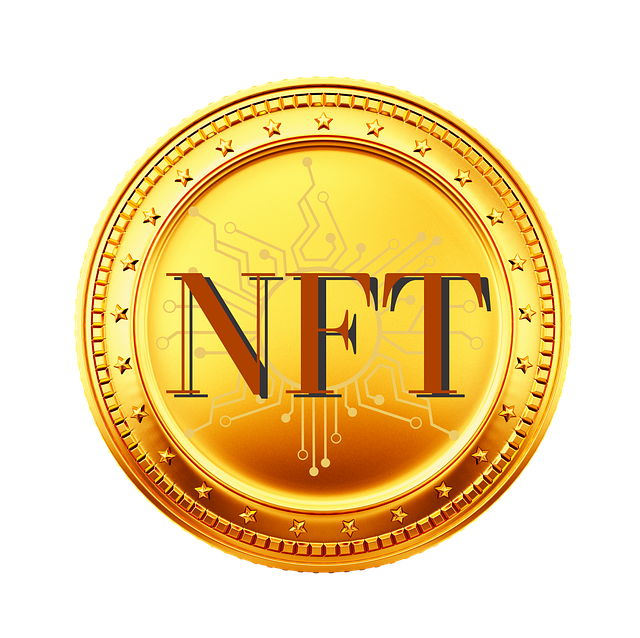Top Crypto Market Makers 2024: Leading Liquidity Providers and How to Use Them
Author: Jameson Richman Expert
Published On: 2025-10-25
Prepared by Jameson Richman and our team of experts with over a decade of experience in cryptocurrency and digital asset analysis. Learn more about us.
Top crypto market makers 2024 are the institutions and trading firms that supply liquidity, tighten spreads, and enable efficient execution across crypto venues. This article explains who the leading market makers are in 2024, how they operate, what metrics to use when evaluating them, and practical steps traders and institutions can take to benefit from improved liquidity — including recommended exchanges and tools to optimize execution.

Why market makers matter in crypto
Market makers (MMs) provide continuous bid and ask quotes for assets, enabling counterparties to buy or sell without waiting for a natural match. In cryptocurrency markets, where fragmentation across exchanges and varying regulatory regimes increases price volatility and execution risk, reliable market making reduces slippage, improves depth, and helps discovery of fair prices.
For a primer on the financial concept, see the Wikipedia entry for Market maker. For background on cryptocurrencies and their market structure, refer to the Cryptocurrency overview on Wikipedia.
How crypto market makers operate (brief overview)
- Automated quoting: Algorithmic systems post thousands of orders across pairs and venues to maintain two-sided markets.
- Risk management: They delta-hedge, net positions across venues, and use derivatives to manage inventory risks.
- Cross-venue arbitrage: Market makers profit from small price differences between exchanges, which also pulls prices into alignment.
- OTC and institutional desks: Many MMs run over-the-counter (OTC) desks for large block trades where exchange liquidity is insufficient.
Evaluation criteria: How to identify a top crypto market maker
Not all market makers are the same. Use the following metrics to evaluate MMs when choosing counterparties or estimating execution quality:
- Liquidity depth and spread consistency: Measure average bid-ask spreads and order book depth (top 5–10 levels) across the pairs you trade.
- Execution quality: Track fill rates, slippage, and latency for orders routed to venues where the MM is active.
- Connectivity and API performance: Low-latency API endpoints and robust websockets are crucial for algorithmic trading.
- Regulatory compliance and counterparty risk: Reputation, licensing (where applicable), and KYC/AML procedures.
- Range of supported assets & products: Spot, derivatives, options, and OTC services expand an MM’s usefulness to clients.
- Global footprint: Presence across major venues and stablecoins reduces single-venue dependency.
- Capital commitment & inventory limits: Firms with larger capital can support deeper books and block trades.

Top crypto market makers 2024 — leading firms and why they matter
The following list highlights market-making firms and trading institutions widely recognized as influential liquidity providers in 2024. This is not exhaustive, and the crypto landscape evolves fast; use the evaluation criteria above to validate current performance.
Jump Crypto (Jump Trading)
Jump Crypto, the crypto arm of the established quantitative trading firm Jump Trading, has become one of the largest liquidity providers in digital markets. Leveraging low-latency infrastructure, broad derivatives expertise, and substantial capital, Jump is active across spot, perpetuals, and options markets. Their strengths for traders include deep order books on key pairs and cross-venue hedging that reduces persistent price gaps.
Wintermute
Wintermute is a European-based algorithmic trader focused on crypto market making and OTC services. It supports both centralized exchanges (CEXs) and decentralized finance (DeFi) liquidity provisioning. Wintermute’s hybrid approach — running automated market-making strategies across AMMs and CEXs — helps them maintain competitive spreads in both centralized and on-chain environments.
GSR
GSR is an institutional liquidity provider with strong OTC and derivatives desks. They supply bespoke liquidity to institutions, run delta-neutral strategies, and provide structured products. Their expertise in large block execution and risk warehousing makes them a preferred partner for funds and corporate treasuries.
Flow Traders (Crypto division)
Flow Traders, a publicly listed proprietary trading firm, expanded into crypto market making and brings decades of ETF and electronic market experience. Their global market access and technology stack supports robust liquidity provisioning across regulated venues, benefiting institutional traders seeking predictable execution.
B2C2
B2C2 is an established OTC and market making firm specializing in over-the-counter liquidity and electronic market making for crypto derivatives and spot. Known for competitive pricing for larger trades, B2C2 is a go-to for institutions needing block fills and integrated hedging across products.
Cumberland (DRW)
Cumberland, the crypto trading arm of DRW, provides OTC liquidity for large trades, serving hedge funds, miners, and corporates. Their deep pockets and experience in traditional markets translate to reliable execution for sizable orders without excessive market impact.
Jane Street (crypto activities)
Jane Street’s expertise in quantitative trading and derivatives has extended into digital asset markets. Although traditionally secretive, their involvement raises the bar for liquidity quality due to precise risk management and market-making algorithms.
Susquehanna International Group (SIG)
SIG brings options and derivatives market-making experience into crypto. Their sophisticated hedging techniques and strong capital base contribute to more resilient markets, particularly in complex derivatives like options and perpetuals.
Other notable participants
- Galaxy Digital’s trading desk provides liquidity to institutional counterparties.
- Coinbase and Binance run internal market-making and liquidity programs to ensure tight spreads on their platforms.
- Specialized emerging firms: several boutique market makers and DeFi-focused LPs provide targeted liquidity for altcoin markets.
For traders using mobile apps or starting with retail exchanges, practical execution matters. See this complete mobile trading guide for Binance to learn how to place orders and monitor fills on the go: How to use Binance app for trading — complete mobile trading guide.
Where these market makers provide liquidity
Top MMs distribute liquidity across:
- Major centralized exchanges (Binance, Coinbase, Bybit, Bitget, MEXC).
- Institutional venues and OTC desks for block trades.
- Decentralized exchanges (Uniswap, Sushi, Curve) where automated market making and liquidity pools are used.
- Derivative platforms offering futures, perpetuals, and options.
If you are opening accounts to access improved liquidity, some commonly used exchanges include Binance (register here), MEXC, Bitget, and Bybit. Use the following registration links if you want to try them:
How market makers affect retail and institutional traders
Market makers influence market quality in ways that matter to both retail and institutions:
- Lower spreads: Tight bid-ask spreads reduce trading costs for all participants.
- Less slippage on market orders: Deeper books mean large market orders move price less.
- Better price discovery: Cross-venue market making reduces persistent price discrepancies.
- Risk of inventory shocks: In stressed markets, MMs may withdraw liquidity to manage risk, causing spreads to widen suddenly.

Practical strategies to benefit from top crypto market makers
Whether you are a retail trader or an institutional allocator, here are actionable steps to improve execution quality with market makers in 2024:
- Measure venue liquidity before trading: Use order book snapshots to assess depth and spreads. Tools like TradingView or exchange APIs can help. For integrating advanced platforms, see the guide on connecting broker data to analysis tools: Ultimate guide to connecting IC Markets to TradingView.
- Prefer limit orders for large sizes: When possible, use limit orders at or inside the spread to avoid taker fees and slippage. Analyze historical fill rates.
- Use hidden or iceberg orders for block trades: Many exchanges offer order types that allow large orders without showing full size to the public book.
- Route orders to the best venue dynamically: Smart order routers that consider fees, depth, and latency often produce better fills than single-venue execution.
- Use OTC desks for blocks: If your trade is larger than the top-of-book depth, access OTC liquidity through firms like Cumberland, B2C2, or GSR.
- Monitor funding rates and spreads in perpetual markets: For derivatives exposure, funding rates signal whether longs or shorts are paying the premium and can indicate where liquidity is concentrated.
- Test your execution: Start with small pilot trades to measure actual slippage and latency before committing larger capital.
How to monitor and measure market-maker performance
To evaluate whether a market maker or venue is delivering quality, track these KPIs systematically:
- Average spread (in bps or USD): Computed over the times you trade.
- Fill rate for limit orders: Percentage of posted limit orders that get executed within expected timeframes.
- Slippage on market orders: Actual execution price vs. mid-price at order time.
- Latency: Time from order submission to acknowledgement and to fill.
- Order rejection rate and cancellations: High rejection increases operational overhead.
Dealing with stressed markets: liquidity dries up — what to do
During flash crashes or macro stress events, many MMs will pull back. Prepare by:
- Using pre-defined stop-loss strategies that account for widened spreads and potential slippage.
- Splitting large orders into smaller tranches over time (TWAP/VWAP algorithms).
- Using OTC desks for guaranteed fills at negotiated prices.
- Maintaining liquidity buffers and stablecoin allocations to act quickly when opportunities arise.

DeFi vs centralized market making — differences traders should know
Market making in DeFi (AMMs and liquidity pools) and centralized venues differs materially:
- AMMs: Liquidity is provided by pools, using automated formulas (e.g., constant product). LPs face impermanent loss but earn fees. Firms providing concentrated liquidity (Uniswap v3) can target ranges to improve capital efficiency.
- CEX market making: Relies on algorithmic quoting and often has counterparty credit and custody models.
- Arbitrage opportunities: DeFi arbitrage can be executed on-chain via MEV (miner/validator extractable value) techniques, whereas CEX arbitrage requires cross-venue transfers and funding.
Regulation and compliance considerations for 2024
Regulation continues to shape market-making activities. Firms operating across jurisdictions must comply with KYC/AML rules, trading rules, and derivatives regulation. Institutional participants should perform counterparty due diligence and consult regulatory guidance in their jurisdiction (for the U.S., the Securities and Exchange Commission and Commodity Futures Trading Commission are key authorities).
For investor-focused regulatory insights on cryptocurrencies, consult your local regulator or the relevant official guidance — for example, the U.S. SEC website and public investor alerts. (See SEC resources for crypto-related notices and investor bulletins.)
Case study: Improving execution using market-maker liquidity
Imagine a mid-sized fund seeking to buy 2,000 BTC. On a single exchange, visible book depth might only absorb 200 BTC within an acceptable spread. The fund can:
- Split the order across multiple exchanges where market makers provide depth.
- Use an OTC desk (e.g., Cumberland or B2C2) to negotiate a block trade for a portion of the order to reduce market impact.
- Hedge residual exposure with futures to manage short-term risk while completing spot purchases.
Combining venue execution with OTC fills and derivatives hedging is the typical institutional approach to minimize slippage and signaling risk. For investors who want to understand macro forecasts that might alter execution strategy, see a long-term price outlook such as this Bitcoin analysis: Is Bitcoin going up or down today in USD in 2025 — an in-depth market analysis, and for altcoin and BCH planning, consider multi-year forecasts like: Bitcoin Cash price prediction 2030 (INR).

Tools and platforms that interact well with market makers
Integrating trading tools, charting, and broker connectivity improves your ability to react to liquidity conditions:
- Trading and charting: TradingView and professional terminals allow you to monitor spreads, volatility, and order flow.
- Execution algorithms: TWAP, VWAP, and adaptive algos help reduce market impact.
- Broker connectivity: For retail traders or smaller institutions, linking broker feeds (IC Markets, etc.) to charting platforms streamlines execution. See this guide for connecting IC Markets to TradingView: Ultimate guide to connecting IC Markets to TradingView.
If you are a mobile trader who needs to place and monitor orders on the go, the Binance app guide mentioned earlier is a practical resource: Complete mobile trading guide for the Binance app.
Risks and red flags when working with market makers
Watch for these warning signs:
- Sudden withdrawal of liquidity: If an MM frequently disappears during stress without prior notification, execution risk increases.
- Opaque pricing on OTC desks: Lack of transparency in how quotes are derived should trigger requests for post-trade analytics.
- Excessive slippage or rejections: These indicate operational or connectivity issues rather than market conditions.
- Regulatory or reputational issues: Firms facing regulatory action or public controversy can create counterparty risk.
Future trends for market making in crypto (through 2024 and beyond)
Several trends are shaping market making:
- More institutionalization: Traditional market-making players are expanding crypto desks, bringing deeper capital and risk processes.
- Convergence of CeFi and DeFi liquidity: Hybrid strategies that provide liquidity both on-chain and on centralized venues are growing.
- Regulatory clarity: Greater regulatory frameworks will push firms to formalize market-making programs and improve transparency.
- Higher automation and AI: Machine learning techniques for quoting, risk controls, and inventory optimization are improving efficiency.

Checklist: How to choose a market maker or liquidity partner in 2024
- Confirm their presence on the venues you use most.
- Request execution statistics (spreads, fill rates, slippage) over a representative period.
- Evaluate API latency and stability using sample test runs.
- Check regulatory standing and perform counterparty due diligence.
- Negotiate OTC terms if you plan large blocks: minimum size, price discovery methodology, and settlement terms.
- Test with pilot trades and monitor post-trade analytics.
Final thoughts and next steps
Top crypto market makers 2024 are a mix of traditional prop-trading firms, specialized crypto LPs, and exchange-run liquidity programs. Their role in improving price discovery and reducing costs for market participants is central to mature crypto markets. For traders and institutions, the most impactful actions are measured: choose venues and counterparties with proven execution quality, use limit and algorithmic orders to reduce market impact, and maintain relationships with OTC desks for block trades.
To begin putting these ideas into practice: open accounts on major venues to access liquidity (Binance, MEXC, Bitget, Bybit), integrate charting and execution systems like TradingView or a broker API, and if you handle large sizes, establish relationships with OTC desks. Use the resources linked above for practical steps on mobile trading and platform integration.
Recommended quick links:
Further reading and analysis:
- Bitcoin Cash price prediction 2030 — long-term forecast
- Bitcoin 2025 market analysis for strategic investors
- Binance mobile trading guide
- Connect IC Markets to TradingView — integration guide
By combining knowledge of who the top market makers are, how they operate, and how to evaluate their performance, you can improve execution, manage risk, and capture better pricing in crypto markets throughout 2024 and beyond.